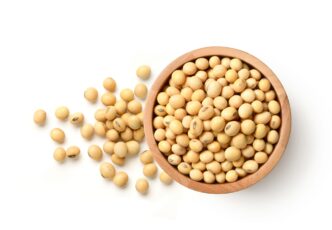Figs may not be a staple in the average Malaysian diet, but these sweet, teardrop-shaped fruits are worth a second look. Packed with fibre, antioxidants, and essential nutrients, figs offer a host of health benefits that make them a smart and tasty addition to your daily meals.
WORDS PANK JIT SIN
Figs are a general term for over 850 species of woody plants.
They are rather variable, with some being climbers and others growing into full-sized trees.
The fruit we commonly eat comes from cultivar (strains) of the species known as Ficus carica or the common fig.
- The common fig is believed to have originated in the Middle East and western Asia.
- It was spread into the Mediterranean region by Greeks and Romans.
- Today, widespread human travel has brought the fig to every possible country.
THE TASTE OF FIG
An interesting trait of fig is the taste—different varieties can have different tastes.
- Pale figs are usually milder in taste and fragrance while the dark ones are usually the sweetest, with stronger taste.
- Some varieties can have melon-like fragrance while others are taste like strawberries.
Regardless of the variety, all figs are packed with dietary fibre and natural sugars. These complex sugars are healthier in comparison to processed sugars.
So, figs can be sugar substitutes in cooking in soups, stews or even curries for that sweet aftertaste.
WHAT’S THE EVIDENCE?
- Studies published in 2017 and 2018 reveal that extracts of the common fig leaf may influence carbohydrate metabolizing enzymes and thus help in blood sugar maintenance when tested on rats with diabetes.
- A recent clinical trial found that eating figs regularly can alleviate constipation among those with irritable bowel syndrome (IBS).
- Another study on mice also found that extracts of the fruit had a natural laxative effect but without inducing diarrhoea. At the same time, the extract could improve stomach and bowel movement disorders.
- The latex of the common fig is also being tested as a potential curative agent against human papillomavirus (HPV), which causes cervical cancer and genital warts. The researchers suggest that latex from the common fig has the potential to be developed into therapies for the treatment, cure and prevention of HPV- related cancers.
- Furthermore, early studies on the extracts and components of the common fig leaves were found to suppress the survival, cell cycle and movement of breast cancer cells. The researchers believe Ficus carica leaves may be a good source of medicines for cancer treatment.
HOWEVER, DO TAKE NOTE
While it is fine to take natural products such as fig-leaf tea for their health properties, they may be better used with precaution and at low doses.
Should you feel unwell, visit a doctor immediately and always tell the doctor about your natural supplements as these may interfere with medications being prescribed by the doctor.
| This article is part of our series on tips and advice for leading a healthy lifestyle. |














